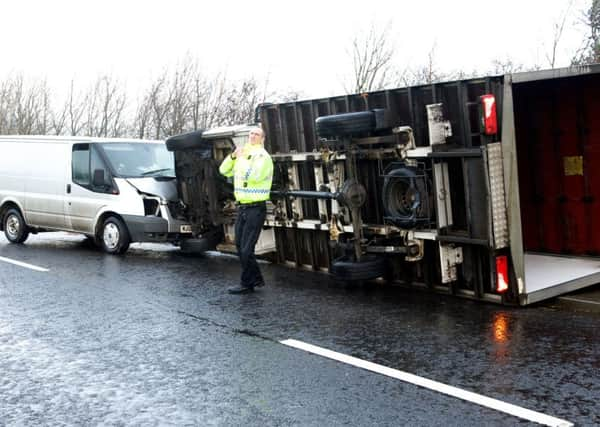Alastair Dalton: Should weather precautions apply to roads?


I understand that in the past, those controlling the rail network attempted to run as normal a service as possible, effectively only cancelling trains when it was no longer possible to run them because of the weather conditions.
That’s now changed, as passengers who had intended to travel across the north and west during Storms Gertrude and Henry over the past week found out.
Advertisement
Hide AdAdvertisement
Hide AdIn fact, I’m told the old policy has pretty much now been reversed, with the body that regulates track owner Network Rail now likely to want to know why services haven’t been halted if winds have reached 80-90mph.
Nowadays, instead of passengers turning up at a station only to discover there are no trains running, decisions are taken to close at-risk routes in advance.
Travellers have been given up to 24 hours notice of the shutdowns, such as on Sunday afternoon in advance of the arrival of Storm Henry the following day.
In addition, I’m told that more than 100 wind alarms have been installed by Network Rail, with a 40mph speed restriction on trains being introduced when gusts reach 60mph. Lines are shut if such winds are forecast to last several hours, or increase.
This precautionary policy derives from the potential threat to trains from hitting obstacles on lines such as wind-blown debris.
There is also the danger from the ground being washed away under tracks, and from landslides, somewhat opaquely described by Network Rail’s regulator, the Office of Rail, as “earthwork failures”.
All of these have happened in Scotland in recent years, with Storm Henry’s gusts even hurling a large chunk of fibreglass boat on to a line on Monday along with the now usual trees, garden sheds and trampolines.
As well as the hazard they pose to passengers and staff, when a train does hit something, it can cause even longer-lasting disruption than the storm itself.
Advertisement
Hide AdAdvertisement
Hide AdThat got me thinking about what other transport operators do in extreme weather.
Ferry operators like CalMac have long cancelled sailings rather than let ferries venture out into hazardous seas. But what about on the roads?
Motorists are sometimes killed or injured by falling trees, which are probably rarely preventable, but far more common are lorries being blown over by strong winds - a familiar image of storm coverage in the media. These often involve just the driver, but during Storm Gertrude last Friday a lorry in Aberdeenshire fell on to a car, injuring the occupants of both.
Police Scotland tells me that lorry drivers are generally compliant with both weather warnings and being ordered not to use certain roads, such as the A82 through Glencoe on Monday, after a van and lorry crashed because of the winds.
But it does beg the question whether more specific alerts should be issued to lorry drivers in stormy conditions for the road network.
On major bridges, restrictions are introduced when wind speeds reach certain levels, such as 50mph on the Forth Road Bridge.
Perhaps a wider system could impose greater road restrictions to help avert potentially fatal crashes, rather than action being taken only after one happens?